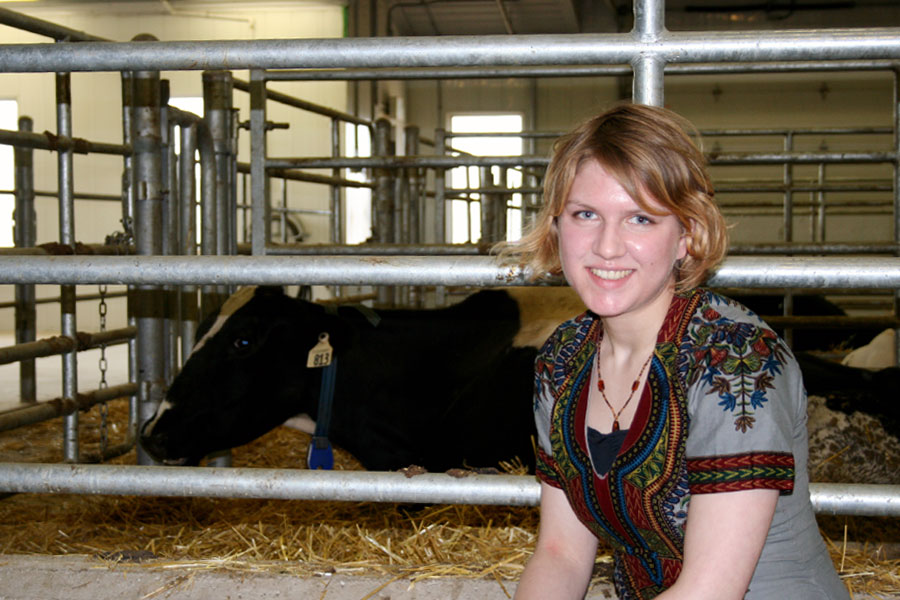
The living lab
Alanna Howell hopes to help the university deal more sustainably and cheaply with a bothersome byproduct of dairy research—cattle manure.
By Michael Robin"As a biological engineering student, I'm quite interested in waste utilization; that is, to use wastes in a way that can actually be beneficial," she said.
The opportunity to find a way to better handle manure from the dairy barn is one of many offered under the auspices of the Sustainability Living Lab initiative, which attempts to find solutions for real-world challenges on campus.
"We've been doing this on an ad hoc basis for years, but last year we decided we're really going to formalize and expand it," said Margret Asmuss, sustainability co-ordinator for the U of S Office of Sustainability.
Howell's work is set up to emulate an actual biological engineering project, with clients and deliverables, research on best practices, a proposed design and recommendations.
Currently, manure produced at the Rayner Dairy Facility is scraped into a pit, stirred into a slurry, pumped into a tank for storage, then hauled away to be spread on fields. Howell said it costs the university about $65,000 a year for the service.
Howell is looking at a system that processes manure through a roller mill to separate the liquids from the solids. The solids can be composted and used to enrich soil. The dried compost could also be used for bedding, allowing part of the manure to be recycled for the dairy barn.
"It might actually be better than straw which, coming from outside, might introduce microbes (into the barn) from a totally different ecosystem," she said.
While dealing with manure solids is fairly straightforward, liquids are more challenging.
"What isn't known is how much it will cost to treat the remaining effluent to the point where it can either be flushed into the sanitary sewer or recycled as grey water, to be used at the facility in some way," Howell said. To this end, Howell is looking at systems used in dairy facilities across Canada and the United States, and developing a short list of possible solutions for the U of S.
"From those alternatives, I'll be choosing one that I'll do detailed design on, and then present to the Department of Animal and Poultry Science." Asmuss explained this is a typical culmination of a Sustainability Living Lab project—a solution that can be implemented by the university. The student projects can also provide valuable foundational information for university planners.
"A number of years ago, we had a group of mechanical engineering students look at (cooling and refrigeration) in Marquis Hall," she said. "When Marquis Hall came to do its renovations, they asked for that study because it provided a lot of the groundwork."
Sustainability Living Lab projects cover a broad spectrum, she said. Planning students are slated to tackle the challenge of making the campus more bicycle and pedestrian friendly, and how to make university lands more effective wildlife corridors. A pharmacy and nutrition student is working with Culinary Services to help offer more locally sourced foods in Marquis Hall, and a School of Environment and Sustainability student is examining ways to assess the sustainability of the university's various farm operations.
"We want to formally link students with sustainability challenges we have on our campus so they can use those as learning opportunities," Asmuss said.

